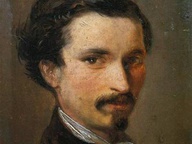12

12 - Glas Italia, Palazzo Fortuny / Ca’ Pesaro, Venezia
From 4 June 2014 to 14 July 2014
Venice
Place: Palazzo Fortuny / Ca’ Pesaro
Address: San Marco 3958 / Santa Croce 2076
Times: 10 am - 6 pm
Responsibles: Daniele Sorrentino
Telefono per informazioni: +39 041 5200995 / 041 721127
E-Mail info: fortuny@fmcvenezia.it
Official site: http://www.visitmuve.it
"12", the number of designers involved, is the title of the exhibition that will be held simultaneously at the prestigious museums in Venice Palazzo Fortuny and Ca 'Pesaro International Gallery of Modern Art.
The aim of the exhibition is in the willingness to look with different eyes the object of design bringing it back to its natural function of use.
The two museums are in fact exposed some of the items of furniture that famous international designers have designed for Glas Italy: Ronan & Erwan Bouroullec, Piero Lissoni, by Michele De Lucchi at Nendo, by Jean-Marie Massaud Naoto Fukasawa, by Ron Gilad Johanna Grawunder, by Jasper Morrison Tokujin Yoshioka by Elena Cutolo Ettore Sottsass.
Visitors to the Ca' Pesaro and Palazzo Fortuny will be induced to admire the works on display, but also consciously invited to enjoy the "design objects" scattered around the museum.
In the relationship between the museum and design, what often tends to emphasize is the pure aesthetic value of the work, such as forgetting most of the time what we are watching or looking at it, and it should be in the first place, an object, then born to a practical use. The very idea of ??the museum as it is now conceived, born as a union between art and architecture, where the link between the two disciplines has declined in the pursuit of total cohesion from a visual standpoint. In this process
it is the architecture to be put at the service of art, in the search for a set that allows spaces to serve, enhance and make more accessible the works present.
But it is precisely at the moment is the design object to be exposed that creates the biggest paradox because, using the same method used in works of art, it is emptied of its practical value, turning it into an icon: they are placed in the foreground lines or even the concepts behind the project, and the same is used to celebrate the genius of its author or his skills as a precursor, just as you would a painting or a sculpture.
Transforming the object into a work of art, in the exaltation of sacralizzandolo aesthetic value compared to practical purposes, it incurs the most obvious misunderstanding of the concept and usage becomes almost a secondary consideration and demeaning than the rest.
This exhibition was created to bring the design object to its natural function of use.
The idea starts from the glass as the main material which is declined in several ways to better accord with the characteristics of spaces and completely different content and products created by the talent of some of the most influential names of classic and contemporary design.
Installed in the premises of the International Gallery of Modern and Contemporary Art of Ca 'Pesaro, in the entrance hall and the first floor which houses a rich collection housed in the palace of Longhena and at the same time on the ground floor of the Palazzo Fortuny, the exhibits are offered not as works to admire, but as objects of particular use to make the museum a physical place to live more for the visitor engaged in paths. No site specific, no work in situ: simply objects that are part of a production line.
At Palazzo Fortuny, you will see the more experimental works where the pieces of Nendo, Piero Lissoni and Jean-Marie Massaud, characterized by an innovative use of glass, from light and bright colors, will be placed in the rooms to accompany the visitors to be use them to sit or as supports for the works on display (which include works by Nan Goldin, Francesca Woodman, Vanessa Beecroft and Diane Arbus.)
At Ca 'Pesaro, the purity and transparency of the crystal will serve as a perfect item to pass through the rich halls of the museum, whose collection are just to name a few, works by Picasso, Kandinsky, Calder, Balla, Medardo Rosso and many others .
Benches, chairs and console strictly transparent, designed by the Bouroullec brothers, Ron Gilad and Tokujin Yoshioka, visitors will be able to relax and enjoy the best masterpieces as exhibitors or for some works, selected from the deposits of the museum and that will be shown for this exceptionally occasion. To complete the route of Ca 'Pesaro, you can visit the ground floor an exhibition of the architect Ettore Sottsass with exposure of "Mirrors of Dionysus" and "Shibam" designed for Glas Italy in 2007.
The aim of the exhibition is in the willingness to look with different eyes the object of design bringing it back to its natural function of use.
The two museums are in fact exposed some of the items of furniture that famous international designers have designed for Glas Italy: Ronan & Erwan Bouroullec, Piero Lissoni, by Michele De Lucchi at Nendo, by Jean-Marie Massaud Naoto Fukasawa, by Ron Gilad Johanna Grawunder, by Jasper Morrison Tokujin Yoshioka by Elena Cutolo Ettore Sottsass.
Visitors to the Ca' Pesaro and Palazzo Fortuny will be induced to admire the works on display, but also consciously invited to enjoy the "design objects" scattered around the museum.
In the relationship between the museum and design, what often tends to emphasize is the pure aesthetic value of the work, such as forgetting most of the time what we are watching or looking at it, and it should be in the first place, an object, then born to a practical use. The very idea of ??the museum as it is now conceived, born as a union between art and architecture, where the link between the two disciplines has declined in the pursuit of total cohesion from a visual standpoint. In this process
it is the architecture to be put at the service of art, in the search for a set that allows spaces to serve, enhance and make more accessible the works present.
But it is precisely at the moment is the design object to be exposed that creates the biggest paradox because, using the same method used in works of art, it is emptied of its practical value, turning it into an icon: they are placed in the foreground lines or even the concepts behind the project, and the same is used to celebrate the genius of its author or his skills as a precursor, just as you would a painting or a sculpture.
Transforming the object into a work of art, in the exaltation of sacralizzandolo aesthetic value compared to practical purposes, it incurs the most obvious misunderstanding of the concept and usage becomes almost a secondary consideration and demeaning than the rest.
This exhibition was created to bring the design object to its natural function of use.
The idea starts from the glass as the main material which is declined in several ways to better accord with the characteristics of spaces and completely different content and products created by the talent of some of the most influential names of classic and contemporary design.
Installed in the premises of the International Gallery of Modern and Contemporary Art of Ca 'Pesaro, in the entrance hall and the first floor which houses a rich collection housed in the palace of Longhena and at the same time on the ground floor of the Palazzo Fortuny, the exhibits are offered not as works to admire, but as objects of particular use to make the museum a physical place to live more for the visitor engaged in paths. No site specific, no work in situ: simply objects that are part of a production line.
At Palazzo Fortuny, you will see the more experimental works where the pieces of Nendo, Piero Lissoni and Jean-Marie Massaud, characterized by an innovative use of glass, from light and bright colors, will be placed in the rooms to accompany the visitors to be use them to sit or as supports for the works on display (which include works by Nan Goldin, Francesca Woodman, Vanessa Beecroft and Diane Arbus.)
At Ca 'Pesaro, the purity and transparency of the crystal will serve as a perfect item to pass through the rich halls of the museum, whose collection are just to name a few, works by Picasso, Kandinsky, Calder, Balla, Medardo Rosso and many others .
Benches, chairs and console strictly transparent, designed by the Bouroullec brothers, Ron Gilad and Tokujin Yoshioka, visitors will be able to relax and enjoy the best masterpieces as exhibitors or for some works, selected from the deposits of the museum and that will be shown for this exceptionally occasion. To complete the route of Ca 'Pesaro, you can visit the ground floor an exhibition of the architect Ettore Sottsass with exposure of "Mirrors of Dionysus" and "Shibam" designed for Glas Italy in 2007.
SCARICA IL COMUNICATO IN PDF
COMMENTI

-
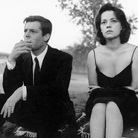 Dal 10 July 2025 al 10 August 2025
Roma | Palazzo Esposizioni Roma
Dal 10 July 2025 al 10 August 2025
Roma | Palazzo Esposizioni Roma
-
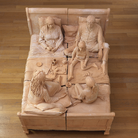 Dal 10 July 2025 al 3 November 2025
Casale Marittimo | Bolgheri, Castagneto Carducci, Casale Marittimo
Dal 10 July 2025 al 3 November 2025
Casale Marittimo | Bolgheri, Castagneto Carducci, Casale Marittimo
-
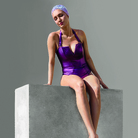 Dal 4 July 2025 al 21 September 2025
Roma | Palazzo Bonaparte
Dal 4 July 2025 al 21 September 2025
Roma | Palazzo Bonaparte
-
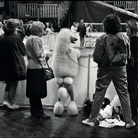 Dal 28 June 2025 al 21 September 2025
Roma | Palazzo Bonaparte
Dal 28 June 2025 al 21 September 2025
Roma | Palazzo Bonaparte
-
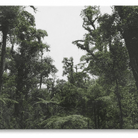 Dal 24 June 2025 al 29 October 2025
Firenze | Museo Novecento
Dal 24 June 2025 al 29 October 2025
Firenze | Museo Novecento
-
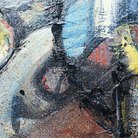 Dal 26 June 2025 al 18 July 2025
Firenze | Palazzo Sacrati Strozzi
Dal 26 June 2025 al 18 July 2025
Firenze | Palazzo Sacrati Strozzi
